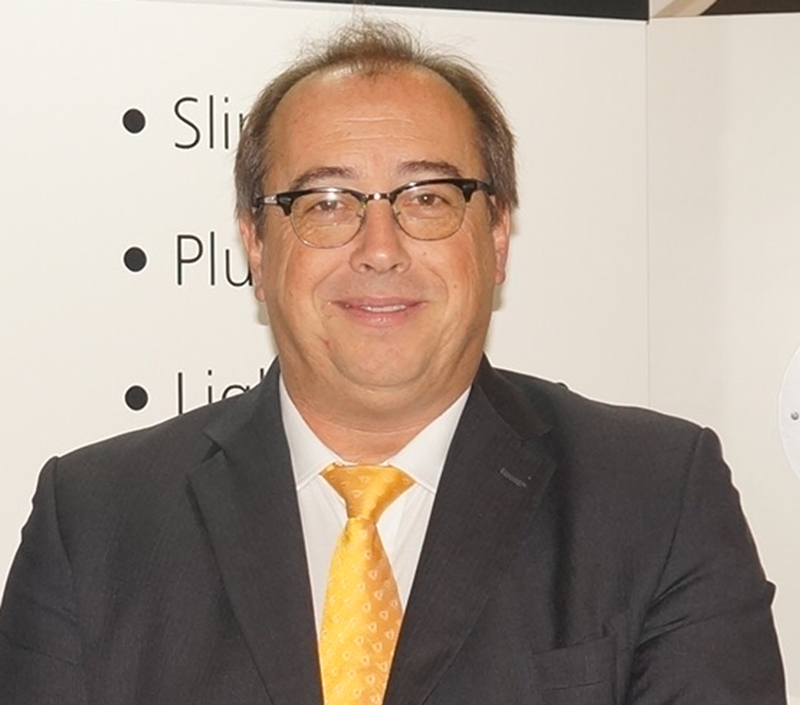Welcome to the world of Scanomics – David Claridge UK CAD/CAM Specialist at Carestream Dental
Featured Products Promotional FeaturesPosted by: Dental Design 4th March 2019


Digital intraoral scanners (IOS) have changed the way that dental professionals provide patient care for the better. In surveys, studies and consultations, the overwhelming patient feedback is a preference for scanning rather than analogue impressions. Whilst manufacturers of IOS claim ‘victories’ over each other in accuracy studies in microns, the take home message is that all the major players are extremely accurate for full arch indications.
Therefore, if we remove the accuracies debate from the equation, at least for the ‘major players’ it makes sense to explore how IOS can offer other benefits – and here is where Scanomics comes in. A portmanteau of scanner and economics, Scanomics is my theory developed from having trained over 600 dentists to adopt IOS, and hearing their needs/wants. Scanomics combines the return on investment with the adoption of disruptive technologies into a mass market.
Dentistry 4.0
The world is now entering the fourth industrial revolution, commonly known as the 4IR. Much like the first industrial revolution that transformed the face of production forever, 4IR is quickly altering daily workflows in dental practices across the country. IOS, in particular, have streamlined the traditional impression taking workflow, and the CAD/CAM laboratory processes have aided this process further.
However, delving into this topic more, IOS are being harnessed for even more ‘value added’ solutions outside of their main purpose i.e. digital impressions. For example, IOS can be used to monitor changes resulting from bruxism or erosion, as well as showing simulated outcomes for aligners or smile design cases. IO scans are overlaid automatically onto CBCT volumes, and can show the patient the accuracy of the digital procedure prior to implant placement and final restoration position. Face scans can also be overlaid onto these planning software images. These features offer a higher level of patient care, and evidence-based treatment acceptance is reputed to be higher. As these techniques cannot be undertaken in-surgery and immediately via ‘analogue’ methods, these technologies are labelled as ‘disruptive’.
The CS 3600 intraoral impression scanner from Carestream Dental is always developing and dentists receive these regular updates. The latest software update includes overlays of scans on top of one another from the same patient during separate sessions, and can immediately present to the patient any significant changes over time. For example, a suspected bruxist patient can be monitored for tooth wear – the intraoral scans taken would easily track and monitor intraoral changes. This, in turn, can help to with treatment acceptance.
What is disruptive technology?
Disruptive technology describes any innovation that can interrupt and change the established workflows, eventually leading to a change in the market. The invention of the Spinning Jenny weaving machine in the first industrial revolution is a prime example of disruptive technology, as it performed the work of eight individuals, thereby greatly improving productivity but threatening employment levels in rural areas.
Disruptive workflow in dentistry
Now let’s apply this idea to dentistry. For the adoption of disruptive technology, alternative or ‘niche’ workflows are required. These ‘niche’ workflows include simulated outcome videos presented to patients, immediately after a digital scan has been taken. Another example is dental labs being able to offer a design service, i.e. if a dentist has a chairside milling machine and an IOS but does not want to/cannot undertake the design processes. So, the scans are sent to the lab, who design the case, and the files are returned to be completed at the practice. 4IR is about transferring files and not goods via the ‘Industrial Internet Of Things’, with production being done locally, not centrally.
The market model
One of the core components of Scanomics is understanding the market model of disruptive technology. Whenever game-changing innovations are introduced there is always a segment of the market who will adopt these technologies straight away – the innovators and early adopters. Between these early adopters and the rest of the market there is a chasm that needs to be breached for more people to buy the product. I explain this is detail during my presentations, and knowing the theory has certainly helped me understand why IOS adoption in the UK is accelerating at its current pace, and why it did not do this ten years ago. Whenever I ask dentists why they purchased an IOS, the main answer I get is that it was a ‘want’ and not a ‘need’. However, with the latest updates, there becomes a business need to go digital. This is where the UK market is today – on the brink of ‘crossing the chasm’.
Enjoying everything a scanner can give you
Scanomics really is all about harnessing the power of disruptive technology in order to enhance treatments and services. To find out more, please attend one of my lectures or hands-on presentations – I am also very happy to present Scanomics to you and your clinicians.
For more information, contact Carestream Dental on 0800 169 9692 or
visit www.carestreamdental.co.uk
For the latest news and updates, follow us on Twitter @CarestreamDentl
and Facebook









